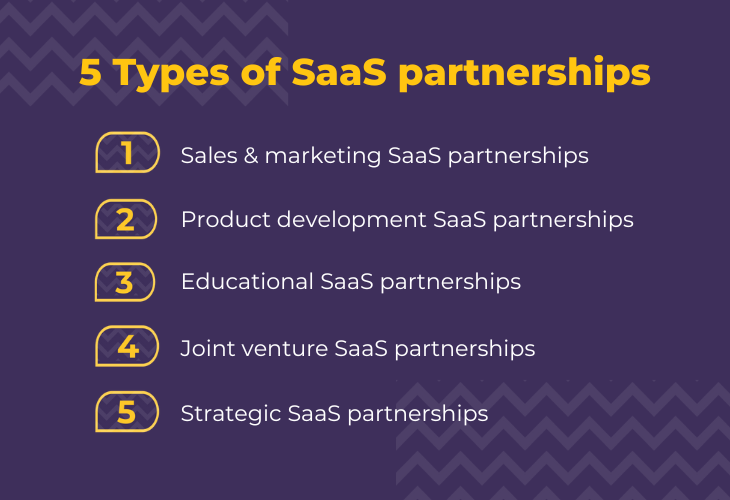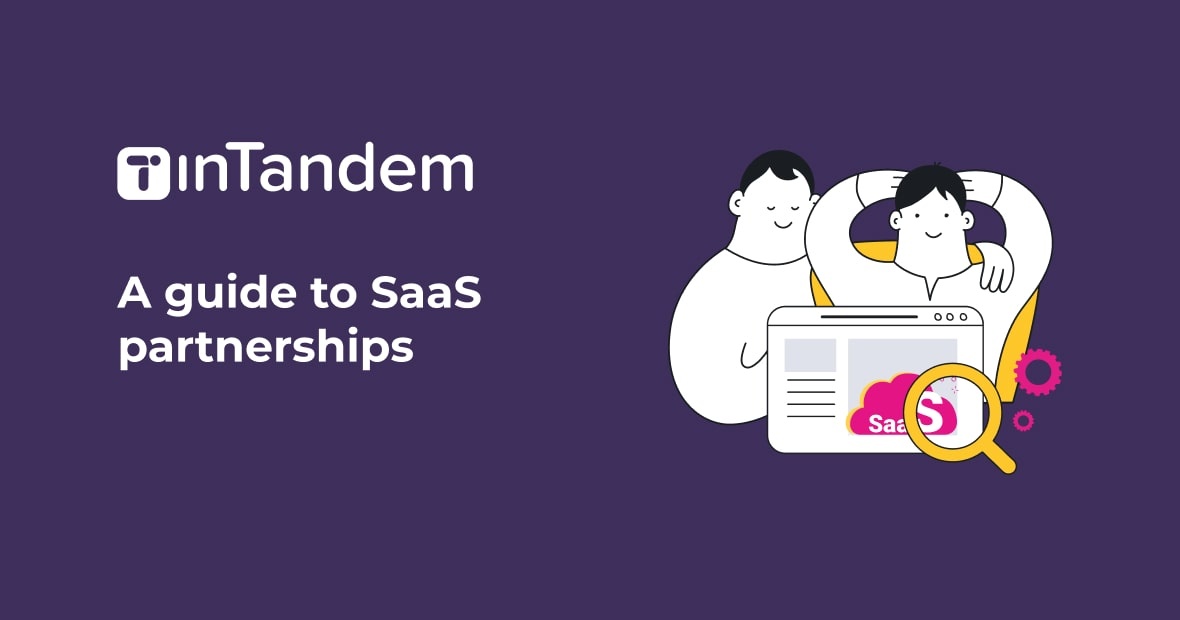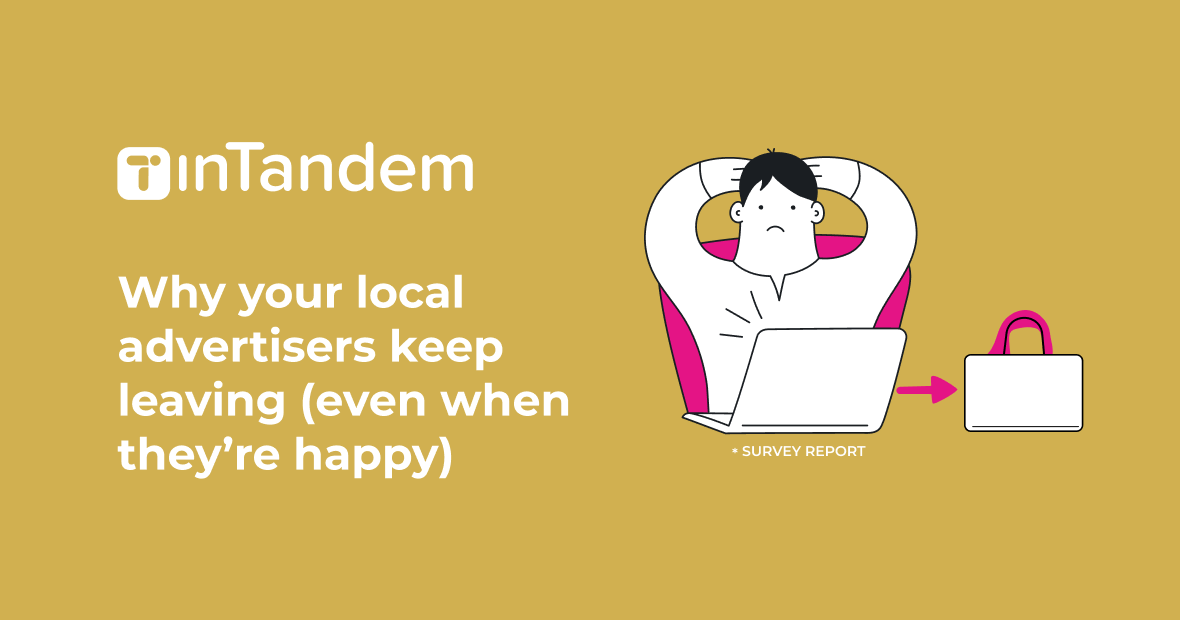It’s not uncommon for companies to reach a stage where growth slows down. You might have already exhausted all your quick wins, picked all the low-hanging fruit, and established a strong foothold in the market. But now what?
If you quit expanding your business, you’ll start losing ground. You need better ways to diversify your offerings and increase your market share, and the best option is often to enter into a partnership with a SaaS company.
SaaS partnerships can be an excellent shortcut to delivering exciting, innovative solutions to your SMB clients’ problems. This way, you can increase your value proposition, strengthen customer relationships, and sharpen your competitive edge, without the expense and challenges of developing something from scratch.
In this article, we’ll dive deep into SaaS partnerships to explain what makes them different, how they can help your company, and the best ways to make them work for you, so you’ll know what to expect when you seek out your first SaaS partnership.
What are SaaS partnerships?
SaaS partnerships are strategic relationships, where one company provides Software as a Service (SaaS) to the other company. The focus is on using tech to enhance the product offering, expand market reach, or integrate complementary services. SaaS partnerships often involve co-branding, co-marketing, co-selling, or integrating technologies to create a more robust solution.
This makes them different to channel partnerships, which emphasize sales and distribution through third-party distributors, resellers, or agents to sell your products or services to a wider market. Effectively, SaaS partnerships are about collaboration on the product or service level, while channel partnerships center around scaling sales and distribution efforts.
Why are SaaS partnerships important?
SaaS partnerships can bring significant benefits for both partners. They allow you to go to market with new features, functionalities, and capabilities much more quickly than if you develop and refine them yourself. Working with a partner also allows you to take advantage of the other’s reach and customer base, helping drive growth and unlock new markets.
In a SaaS partnership, you can deliver rich solutions that address your SMB clients’ complex needs, without needing to become experts in new technology. There’s no risk that you’ll deviate from your core competency, or have to redirect resources away from your key business goals.
SaaS partnerships can also drive a more streamlined user experience. If you integrate your solution with a complementary one, you can deliver a unified single experience with less friction. An all-in-one solution that integrates both technologies reduces the need for the customer to juggle between multiple platforms, enabling smoother workflows which increases stickiness and lowers churn.
Overall, SaaS partnerships make it possible to expand your business and move quickly on new opportunities. In a competitive market, collaborating with a SaaS partner can drive growth and improve business development.
5 Types of SaaS partnerships

There are a number of different types of SaaS partnerships. Different ones are appropriate to different businesses and different situations, so consider what you want to gain from the partnership before you decide which type to pursue.
Sales and marketing SaaS partnerships
In a sales and marketing SaaS partnership, you’ll jointly develop and execute sales and marketing strategies. In most cases, you won’t directly change the products or services involved. The partner could simply use their own communication channels to promote your SaaS solution, or handle promotion or manage customer support.
Pros:
- Access to new markets by leveraging the partner’s relationships, credibility, and audience reach.
- Reduced Customer Acquisition Costs (CAC) because you only invest when a sale is made.
Cons:
- Revenue sharing, through discounts or commissions to incentivize partners, which could reduce overall profit margins.
Product development SaaS partnerships
A product development partnership involves collaborating to create new products or enhance existing solutions. You’ll combine resources, expertise, and technologies to produce innovative offerings that neither of you could achieve alone. These could include integrated all-in-one solutions, or customized products tailored to specific customer needs.
Pros:
- Access to new technologies and expertise to develop products that better meet market demands and key customer needs.
- Advanced, more comprehensive product offerings by integrating your product with another company’s solution. This is particularly valuable in competitive markets.
Cons:
- Integration problems from trying to merge different technologies could lead to compatibility issues or make the product overly complicated for end users.
Educational SaaS partnerships
In an educational SaaS partnership, you’ll work with educational institutions or training programs to provide students or trainees with access to your software. This partnership helps integrate your product into the learning process, and can influence future professionals and decision-makers.
Pros:
- Increased brand awareness by introducing your product to students or trainees, and enhanced credibility by associating your brand with reputable educational institutions.
Cons:
- Cost of time and resources involved in developing educational content and supporting students, which can require significant investment.
Joint venture SaaS partnerships
For a joint venture SaaS partnership, two or more companies combine their resources, expertise, and capital for a specific project or to set up a new business entity. The partners share responsibilities, decision-making, and profits, according to a formal joint venture agreement that defines the terms of their partnership.
Pros:
- Shared risks and costs across the partners, because they pool resources, making it a more cost-effective and less risky venture.
Cons:
- Potential conflicts of interest between partners, arising from the shared control and decision-making.
Strategic SaaS partnerships
A strategic SaaS partnership is a long-term collaboration aimed at achieving a significant, shared goal. With this type of partnership, you’ll work together across a number of business areas, like product development and marketing. Sometimes, you’d form a joint venture as part of your strategic partnership.
Pros:
- Long-term growth opportunities and lasting value, because you’re leveraging each other’s strengths across multiple areas and setting long-term goals.
Cons:
- Increased dependency due to the deep integration and long-term commitment, so one partner’s challenges or strategic shifts could significantly impact the other.
How to choose the right SaaS partner
It’s one thing to know that you’re ready for a SaaS partnership. But once you’ve decided that a SaaS partnership would be beneficial for your business, you need to find the right partner. Here are the top best practices for finding a supportive partner for a successful SaaS partnership.
Outline your business goals
It’s extremely important to work with a company whose business goals align with yours, but first you need to know what yours are. Define what you want to get out of the partnership, whether that’s increased market share, stronger customer relationships, or a more complete value proposition.
Find complementary products
Next, look for a business with products or services that work well with your current offering. You want to deliver an integrated product/service that enhances your existing product line and increases value and reduces friction for the end user.
Seek out an experienced SaaS partner
It’s best to work with a partner with a proven track record of successful SaaS partnerships, especially if this is the first time that you’re venturing down this road. Look for a company with a robust partnership program, like vcita’s inTandem, which understands your industry and has the necessary technical skill sets to meet your goals.
Define roles and responsibilities
A successful SaaS partnership relies on defining clear roles for specific tasks, decision-making, and resources. This way, you’ll ensure accountability and smooth collaboration, and help avoid misunderstandings and overlap. When each party knows what they are responsible for, they can plan their time and resources appropriately, and vital tasks won’t fall through the cracks.
Establish open channels for communication
Good communication is crucial for any relationship, so seek a partner who values transparency. You need strong communication channels for frequent updates, to coordinate your efforts most effectively. It’s best to agree on KPIs and metrics that you’ll review regularly, to track how your partnership is performing and what needs to be adapted to meet your needs.
Make sure you get the support you need
Getting the right support ensures that both you and your partner can effectively develop, promote, and sell your products and services. This should include:
- Marketing and sales enablement like crafting co-branded materials, joint campaigns, and sales strategies;
- Employee training to ensure that both teams fully understand the product and can confidently present it to customers;
- Robust customer support so that end users have a seamless experience, which enhances satisfaction and retention;
- Technical support to maintain your SaaS product, such as bug fixes, software updates, and releasing new features.
Starting down the SaaS partnerships path
SaaS partnerships offer a powerful avenue for SMB-serving companies to kickstart growth, expand their offerings, and maintain a competitive edge in the market. By leveraging the strengths of a strategic SaaS partner, you can deliver more value to your SMB customers without spending on resources or deviating from your core competencies.
As you consider entering into a SaaS partnership, be sure to clearly define your goals, choose a partner that complements your strengths, and establish strong communication and support systems to ensure the collaboration thrives.



























